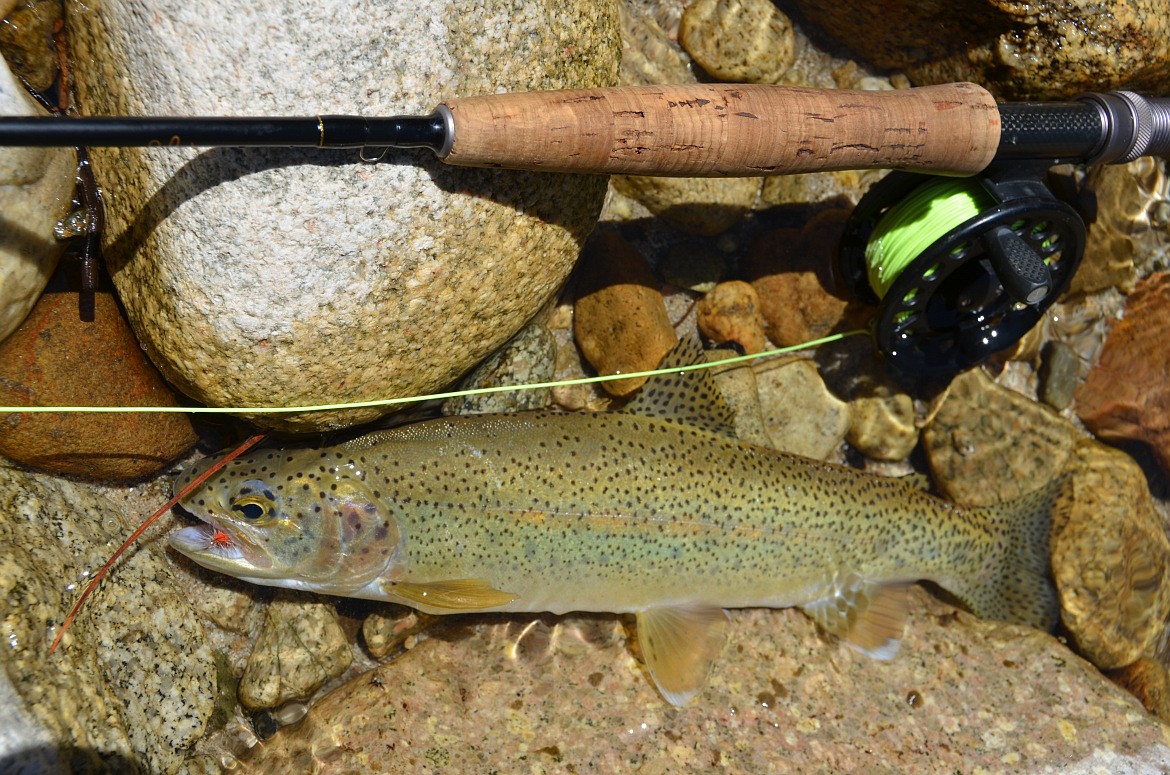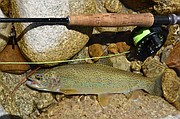Trout feeling the heat
JOE KOZFKAY Contributing Writer | Coeur d'Alene Press | UPDATED 3 years, 9 months AGO
Wild animals for the most part are well equipped to survive fluctuations in environmental conditions, and trout, Idaho’s favorite fish, are no different. Although they prefer cold water, trout are highly resilient, productive and adaptive. Because of this, short-term fishing regulation changes are unlikely to affect their numbers long-term, even during an extraordinary heatwave.
Recently, well-intended anglers and angling groups have requested Fish and Game restrict or close fishing during extreme heat because they feel restrictions will reduce fishing-related mortality and preserve more trout for next year when conditions will hopefully improve.
We are concerned, too
Fish and Game biologists, nearly all of whom are anglers, understand and share their concerns and acknowledge that some heat-stressed fish will die from angling-related mortality. However, basing fishing closures on reduced risk to a relatively small portion of the local trout population is unlikely to change the overall numbers in the near or long term.
Extensive monitoring efforts have clearly shown that fishing effort and catch rates decline substantially during late summer when hot weather makes air and water uncomfortably warm for anglers and trout, alike.
Therefore, a relatively low proportion of a stream or river’s trout population has slightly higher mortality associated with angling, and in short, it won’t affect trout abundance the following year, which makes restrictions or closures biologically unnecessary. Regardless, biologists remain committed to monitoring and researching this topic, and assessing whether regulation changes are needed to ensure these cherished resources remain healthy into the future.
Weather or not
River flows and temperatures are probably the two most important environmental conditions for Idaho’s stream and river-inhabiting trout, and we’ve seen some wild fluctuations in recent years.
Within the last four years, grandparent-aged trout now at the ripe, old-age of six or seven and approaching the great beyond have experienced a once-in-40 year flooding in 2017 after the now-legendary “Snowmaggedon.” And as that event was just starting to fade into history, we’re confronting record-high temperatures and a surprising water scarcity in 2021 (aka Scorchfest).
Between these extremes was a relatively stable period of average to above-average flows. Quite often, biologists are asked: “How do trout populations respond to such events? What does Fish and Game do to ensure trout populations remain healthy during extreme conditions?”
2021 has brought on more of these questions than usual, and although Snowmaggedon and Scorchfest are hopefully rare events, they aren’t unprecedented, and trout have thrived before and after similar weather events.
Summer can be scary, but winter is the real peril
For the most part, in largely unaltered watersheds, flows and temperature go hand-in-hand. Good snowpacks, allow for higher flows later into the summer and temperatures remain cool (less than 65-70 F). At the same time, cool water carries more oxygen. Assuming runoff comes off gradually and doesn’t scour redds and flush fish eggs out of the gravel, these are good times for trout, and good water years allow for high winter flows.
Winter is often the most important period for trout and can be seen as a filter controlling how many trout will be available for anglers to target the following year. After a series of good water, temperature, and winter flow years, trout populations increase sometimes to the tune of 30 percent above long-term averages.
In contrast and using 2021 as an example, low snow pack, a historic dry spring, and elevated air temperatures have created less-than-ideal conditions for stream and river-dwelling trout. Above-average water temperatures may increase natural mortality rates for trout as they are forced into completing longer-distance migrations to seek out colder waters, or succumb to stressful environmental conditions.
Trout naturally turnover at high rates
Natural mortality rates from disease or predation may also increase as trout get squeezed into less usable habitat. But again, winter is often the most important filter, and trout being territorial critters have less available space and lower quality habitats to survive winter when poor water years contribute to lower winter flows. After a poor water year when flows decline, trout populations usually decline.
Generally, annual natural mortality rates for Idaho’s trout populations range from 30 percent to 60 percent. High reproduction rates, good growth, thousands of eggs per female and early ages at first spawning allow for trout populations to replace lost individuals with no long-term consequences to population abundance. In addition, these same factors allow for sustainable recreational fisheries, either harvest oriented or catch-and-release.
Recreational fisheries are managed to ensure that fishing-related mortality does not become excessive and cause populations to decline. Fortunately, fish removed from populations due to fishing mortality reduce the likelihood of their brethren being lost due to natural causes. We are fortunate that trout populations compensate in this manner, allowing Idaho angler’s to sustainably pursue their favorite fish for enjoyment or sustenance, year-round in some waters.
Good habitat insures against extreme conditions
Being that people and Fish and Game have little ability to control Idaho’s snowpack, department efforts to ensure trout populations are resilient in the face of extreme conditions, such as this year’s drought, revolve around restoring habitat to provide better stream and river channel depths and to provide more shading from cover, or bankside vegetation, thereby keeping waters cool. Staff also work to maintain adequate flows and secure key habitats that possess cold-water refuges.
Lastly staff work to remove barriers allowing trout to seek out cold water on their own. Department efforts, and that of our conservation partners, to restore habitat, have been effective, but there is certainly more work to be done to ensure Idaho’s trout have a bright and cool future.
Joe Kozfkay is the state fisheries manager at Idaho Department of Fish and Game.
MORE OUTDOORS STORIES

Montana to regulate trout fishing, invest in research
Coeur d'Alene Press | Updated 1 year, 10 months ago





